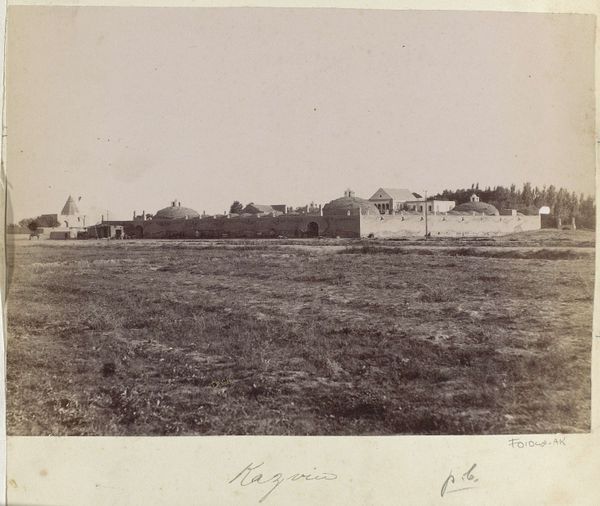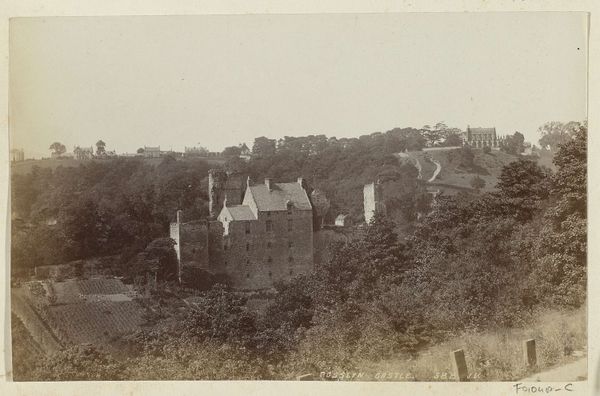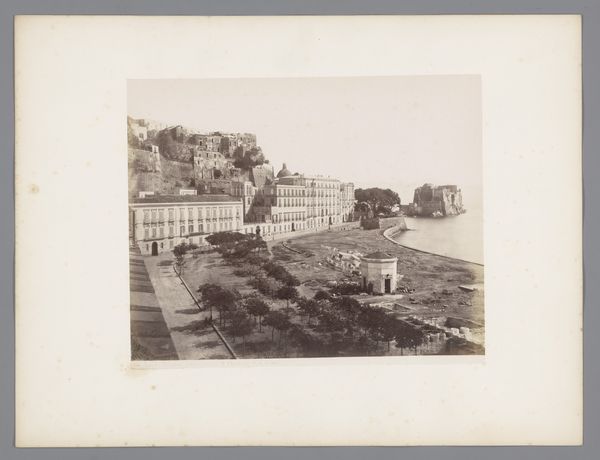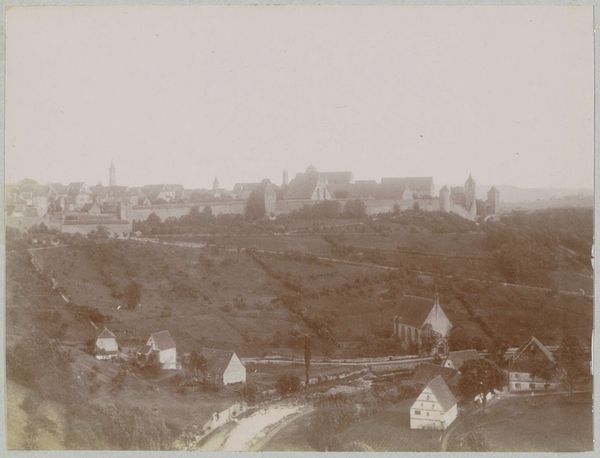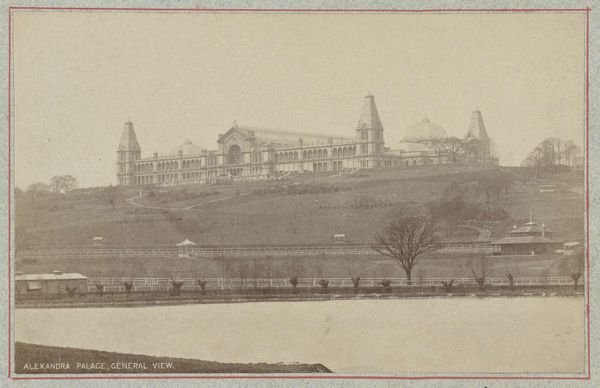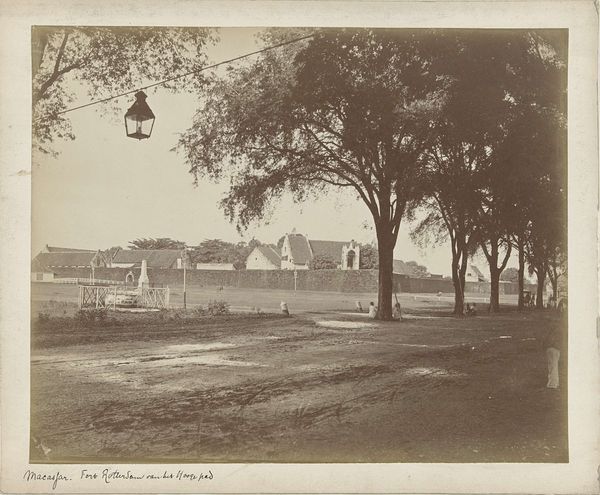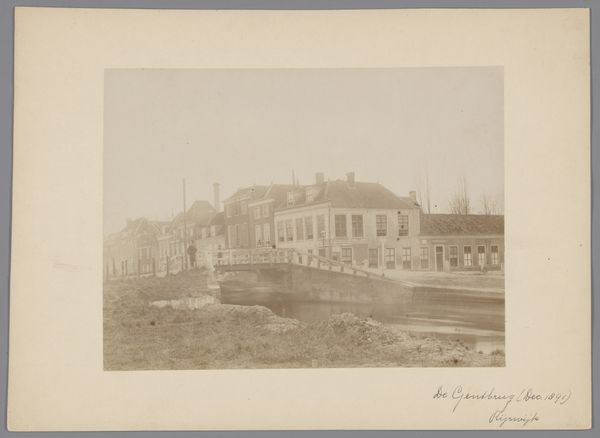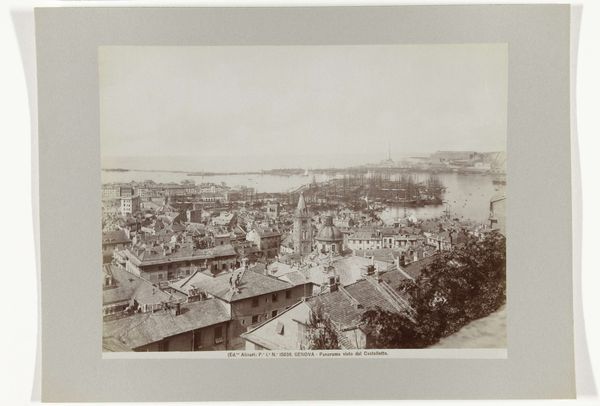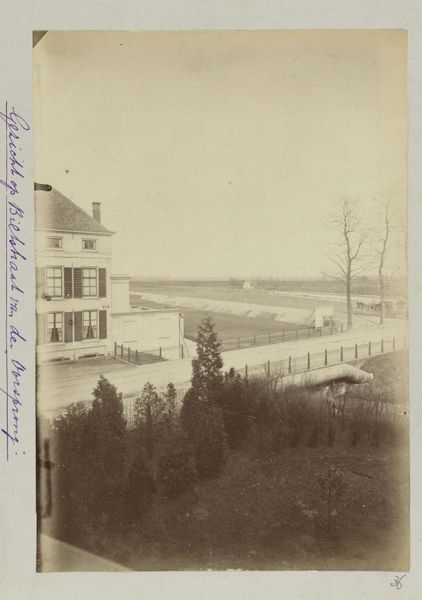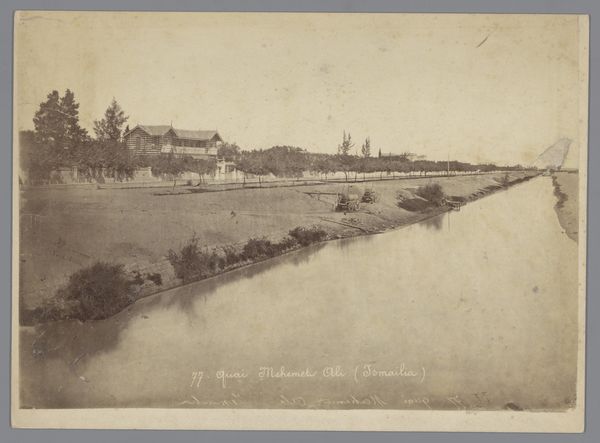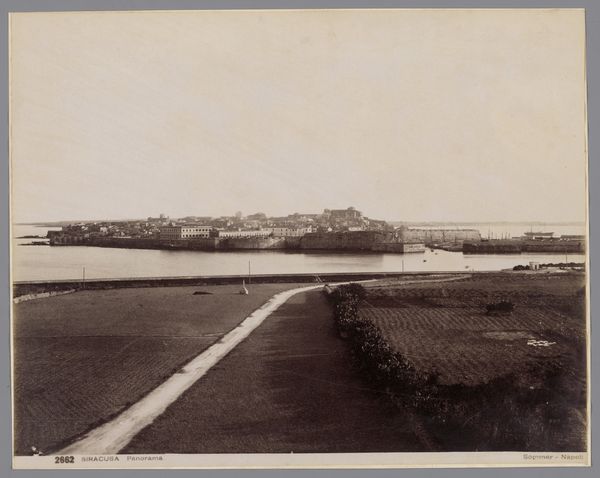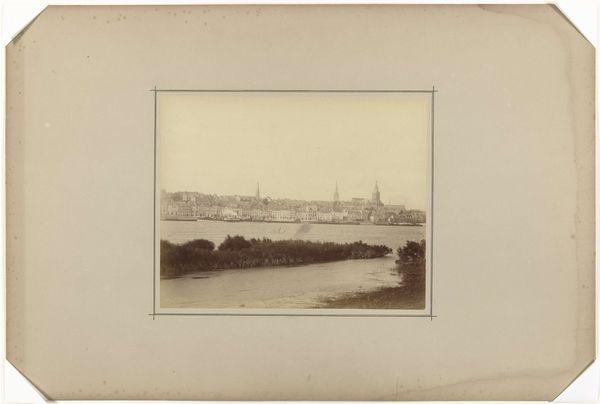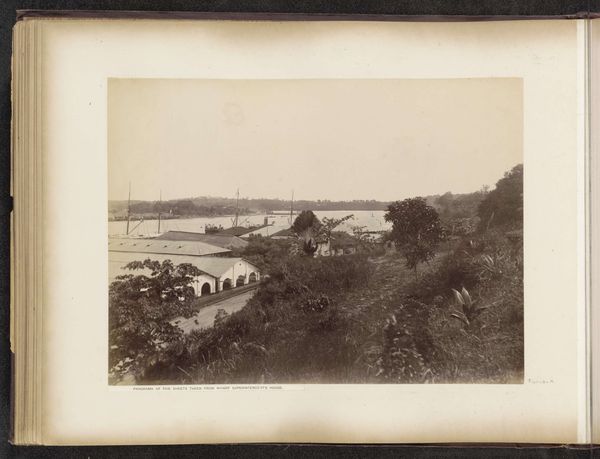
print, photography
#
pictorialism
# print
#
landscape
#
photography
#
cityscape
Dimensions: height 86 mm, width 116 mm
Copyright: Rijks Museum: Open Domain
Curator: This is a wonderful example of pictorialist photography, "Gezicht op Remagen," dating from around 1895 to 1905, a print by David Vermeulen. What are your initial thoughts? Editor: My first thought is quiet contemplation. There's a hushed, almost melancholic feel to it, with that soft-focus haze and the muted tones. It's like looking at a memory, or a scene half-remembered. I am, though, mostly drawn to that walled structure in the foreground! Curator: Absolutely, the image is heavy on atmosphere, deliberately so. Vermeulen, like many pictorialists, manipulated the photographic process to achieve an aesthetic akin to painting or etching. It's fascinating how he evokes the scene using techniques like soft focus to obscure fine detail, highlighting instead tonal range and composition. As for that walled structure, could this be a public park? Editor: Precisely! The printing process seems key to creating that mood, really, doesn't it? It's impossible to ignore the materials. Here, Vermeulen elevates the mundane - this photograph uses printing to intentionally veil the mechanics and labor involved. But let's remember photography's inherent ties to industrial chemistry. The paper, the emulsion... How much did the price of production govern distribution? Curator: Good question, one certainly relevant for a "landscape." The composition itself draws your eye in - the rooftops nestling below the elevated camera angle really speak to that romantic interpretation of cityscape. It whispers of simpler times, before relentless modernization changed how cities look. What do you think it would be like walking in the city at that time? Editor: Right? Well, I keep noticing those twin figures strolling into frame. Pictorialism attempts to deny photography's indexicality but still depicts working-class promenaders in dark, weighty clothes produced in Remagen's fabric mills. Consumption on holiday always invokes production for everyday living, doesn't it? That's also suggested here! Curator: A subtle reminder that idyllic visions often obscure the machinery and materials beneath. Pictorialism aimed at beauty but ended up reminding of lived experience too! Well, considering our short time together, do you have any last thoughts about the image, what has really stuck with you? Editor: For me, it's how this one photographic print challenges simple oppositions like 'art' versus 'craft.' It's through an intense focus on labor and resources that its meaning really begins to coalesce, like light slowly forming an image in a developing tray. Curator: Indeed. This brief discussion offers a great opportunity to engage with 'Gezicht op Remagen’ on different levels. As we move onward, keep an open mind to the different methods and insights you gain through exploring artworks.
Comments
No comments
Be the first to comment and join the conversation on the ultimate creative platform.
